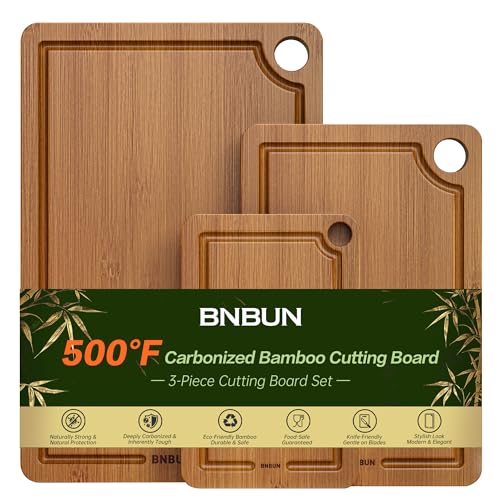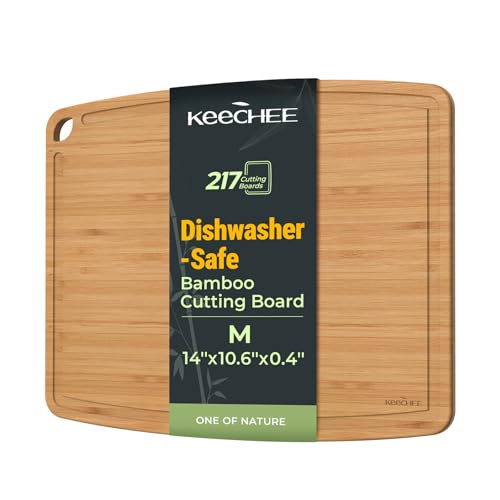What is Salsa Verde?
Salsa verde is a vibrant green sauce originating from Mexican cuisine that features tomatillos as its primary ingredient. Unlike red salsa which uses tomatoes as its base this zesty condiment gets its distinctive bright green color from fresh tomatillos cilantro and green chiles. The name literally translates to “green sauce” in Spanish reflecting its verdant appearance.
Traditional Mexican salsa verde combines raw or roasted tomatillos with onions serrano or jalapeño peppers garlic cilantro and lime juice. The tomatillos provide a unique tangy and slightly fruity flavor that distinguishes salsa verde from other sauces. These small green fruits resembling tomatoes are actually related to gooseberries and come wrapped in a papery husk that must be removed before cooking.
The flavor profile of salsa verde balances tangy bright and herbaceous notes with a hint of heat that can be adjusted according to your preference. Some versions are served raw for a fresher taste while others are roasted or simmered to develop deeper complex flavors. Regional variations exist throughout Mexico with some recipes incorporating avocado cumin or additional herbs depending on the local culinary traditions.
This versatile sauce serves as both a condiment and an ingredient in many classic Mexican dishes. You’ll commonly find salsa verde drizzled over enchiladas verdes spooned onto tacos mixed into pozole verde or used to braise meat in dishes like pork chile verde. Its tangy profile cuts through rich foods making it an ideal accompaniment to fatty meats eggs or cheesy dishes.
Why Make This Salsa Verde Recipe

This homemade salsa verde recipe deserves a permanent spot in your culinary repertoire for many compelling reasons. Fresh ingredients create an explosion of flavor that store-bought versions simply cannot match with their vibrant tanginess and herbaceous notes working together in perfect harmony.
The recipe offers incredible versatility as it complements countless dishes from traditional Mexican fare to everyday meals. Your tacos enchiladas burritos and grilled meats will transform from ordinary to extraordinary with just a spoonful of this bright green sauce.
Making salsa verde from scratch gives you complete control over the heat level allowing you to adjust the jalapeños to suit your personal preference. Those who enjoy mild flavors can remove seeds and membranes while heat lovers can add extra peppers for that perfect kick.
This recipe requires minimal cooking skills making it accessible even for kitchen novices. The simple roasting technique enhances the natural flavors of the tomatillos and peppers while maintaining their fresh essence.
Cost effectiveness represents another important advantage as homemade salsa verde costs a fraction of premium store brands. One batch yields approximately 2 cups which stays fresh in your refrigerator for up to a week ensuring you always have this flavorful condiment ready to elevate your meals.
The nutritional profile stands out with low calories abundant vitamins and minimal added ingredients. Unlike commercial versions this recipe contains no preservatives artificial flavors or excess sodium making it a healthier choice for your family.
Ingredients for Authentic Salsa Verde
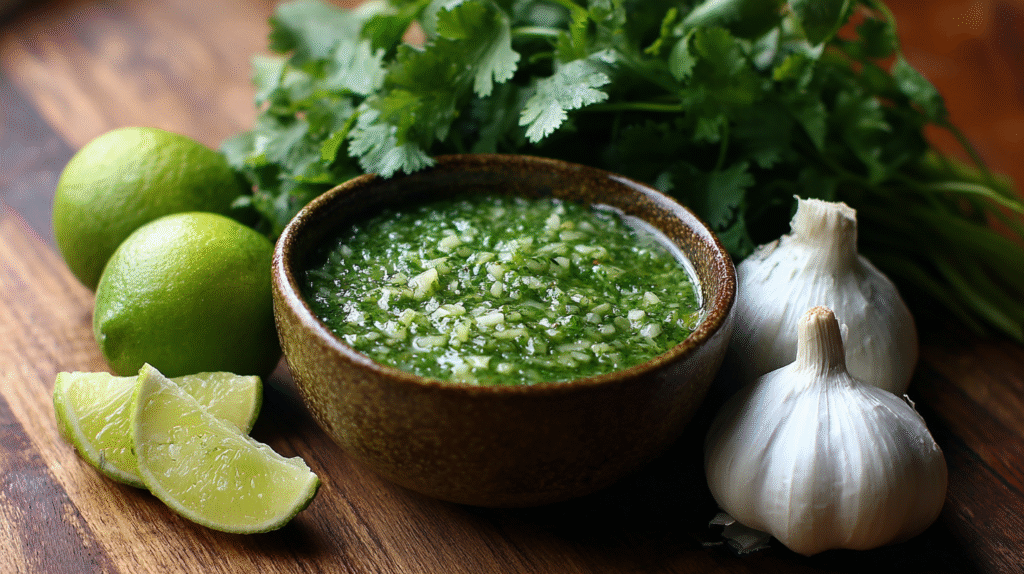
Creating authentic salsa verde requires fresh quality ingredients that work together to deliver that distinctive tangy bright flavor profile. Each component plays an essential role in developing the depth and character of this versatile Mexican sauce.
Fresh Tomatillos
Tomatillos serve as the foundation of any authentic salsa verde recipe with their unique citrusy tartness. For this recipe you’ll need 1 pound (about 8-10) fresh tomatillos still in their papery husks. Select firm tomatillos with tight-fitting husks that are bright green rather than yellowish which indicates overripeness. Before using them remove the husks wash the sticky residue off thoroughly and cut them in half. Roasting tomatillos brings out their natural sweetness while maintaining that signature tang essential to great salsa verde. If fresh tomatillos aren’t available canned versions can work in a pinch though the flavor won’t be quite as vibrant.
Jalapeños and Serrano Peppers
The heat element in salsa verde comes from fresh green chiles that complement the tomatillos perfectly. This recipe calls for 2-3 jalapeños or 3-4 serrano peppers depending on your preferred spice level. Serranos pack more heat than jalapeños giving you control over how fiery your salsa becomes. For milder salsa remove the seeds and white membranes which contain most of the capsaicin (the compound responsible for heat). Roasting the peppers alongside the tomatillos mellows their sharpness slightly while adding smoky depth. Remember to wear gloves when handling hot peppers to avoid the unpleasant surprise of chile oils on sensitive skin or eyes.
Aromatics and Herbs
The supporting cast of ingredients elevates salsa verde from simple to spectacular with layers of flavor. You’ll need 1 medium white onion (roughly chopped) 3-4 garlic cloves (peeled) 1/2 cup fresh cilantro leaves and 1-2 tablespoons of fresh lime juice. The onion provides sweetness while garlic adds pungent depth that balances the acidity of the tomatillos. Fresh cilantro contributes that distinctive herbaceous quality authentic to Mexican cuisine while lime juice brightens everything with citrus notes. Some regional variations include a pinch of ground cumin or oregano for additional complexity. Salt is crucial too about 1/2 to 1 teaspoon depending on taste preferences as it enhances all other flavors and binds the profile together.
Kitchen Tools You’ll Need
Preparing homemade salsa verde requires minimal equipment yet proper tools ensure the best results. Gather these kitchen essentials before starting your fresh Mexican green sauce:
- Baking sheet – A rimmed sheet prevents tomatillo juices from spilling in your oven during roasting
- Parchment paper – Creates a non-stick surface for easy cleanup after roasting ingredients
- Chef’s knife – Essential for properly dicing onions and removing stems from tomatillos
- Cutting board – Provides a stable surface for prepping all fresh ingredients
- Blender or food processor – The crucial tool that transforms roasted ingredients into smooth salsa
- Citrus juicer – Extracts maximum juice from limes without seeds
- Measuring spoons – Ensures proper salt and seasoning proportions
- Rubber spatula – Helps scrape every bit of delicious salsa from your blender
- Storage containers – Airtight glass jars work best for refrigerating your finished salsa verde
- Small bowls – Useful for holding prepped ingredients before processing
Your blender choice significantly impacts the final texture. High-powered blenders create ultra-smooth salsa while food processors produce a slightly chunkier version with more texture. Both deliver excellent results depending on your preference. Remember to taste and adjust seasonings using small spoons before transferring your finished salsa verde to storage containers.
How to Make Salsa Verde
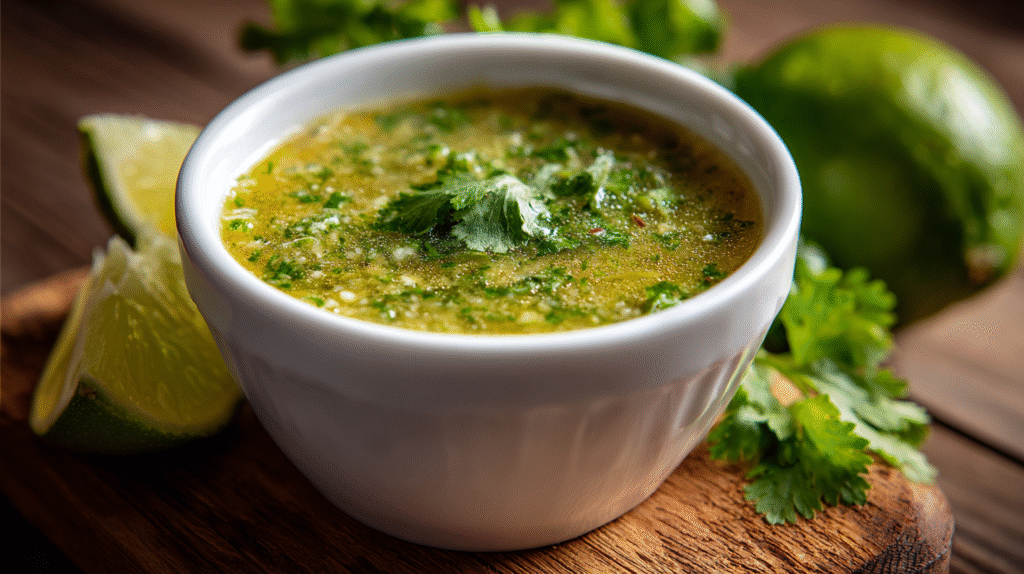
Creating authentic salsa verde at home is surprisingly straightforward and requires minimal cooking skills. Follow these simple steps to create a vibrant green sauce that surpasses any store-bought version in flavor and freshness.
Preparing the Tomatillos
Remove the papery husks from your tomatillos and rinse them thoroughly under cool water to eliminate the sticky residue on their surface. Cut larger tomatillos in half or quarters for more even cooking. Slice the jalapeños in half lengthwise and remove the seeds and membranes if you prefer a milder salsa. Peel the garlic cloves and quarter your onion to ensure all ingredients cook evenly. This preparation stage sets the foundation for a well-balanced salsa verde with harmonious flavors.
Roasting Method
Preheat your oven to 425°F and line a baking sheet with parchment paper. Arrange the prepared tomatillos, jalapeños, onion quarters, and garlic in a single layer on the baking sheet. Drizzle everything lightly with olive oil and sprinkle with salt. Roast for 15-20 minutes until the tomatillos soften and begin to brown slightly. You’ll notice the tomatillos releasing their juices and the jalapeños developing charred spots. This roasting process intensifies the flavors and adds a subtle smokiness that elevates your salsa verde to restaurant quality.
Boiling Method
Fill a medium saucepan with enough water to cover your tomatillos and bring it to a boil. Add the tomatillos, jalapeños, onion, and garlic to the boiling water. Reduce heat to medium and simmer for about 8-10 minutes until the tomatillos turn from bright green to a softer olive shade and feel tender when pierced with a fork. Drain the ingredients thoroughly before proceeding to the blending step. This gentler cooking method preserves the bright tanginess of the tomatillos while softening them perfectly for blending.
Blending the Salsa
Transfer your cooked tomatillos, jalapeños, onion, and garlic to a blender or food processor. Add fresh cilantro, lime juice, and salt. Pulse several times to chop ingredients coarsely, then blend until you reach your desired consistency. For a chunkier texture, blend briefly with several pulses. For smoother salsa, blend continuously for 30-45 seconds. Work in batches if necessary to avoid overcrowding your blender. Remember to secure the lid firmly and start on low speed to prevent hot ingredients from splattering.
Adjusting the Consistency and Flavor
Taste your freshly blended salsa verde and make any necessary adjustments. For thinner salsa, add 1-2 tablespoons of water or chicken broth. If it’s too watery, simmer the salsa in a saucepan for 5-10 minutes to reduce excess liquid. Balance flavors by adding more lime juice for tanginess, salt for depth, or a pinch of sugar to tame excessive acidity. Allow your salsa to cool completely before transferring to storage containers. The flavors will continue developing and melding as the salsa rests, becoming even more delicious after a few hours in the refrigerator.
Storing Your Homemade Salsa Verde
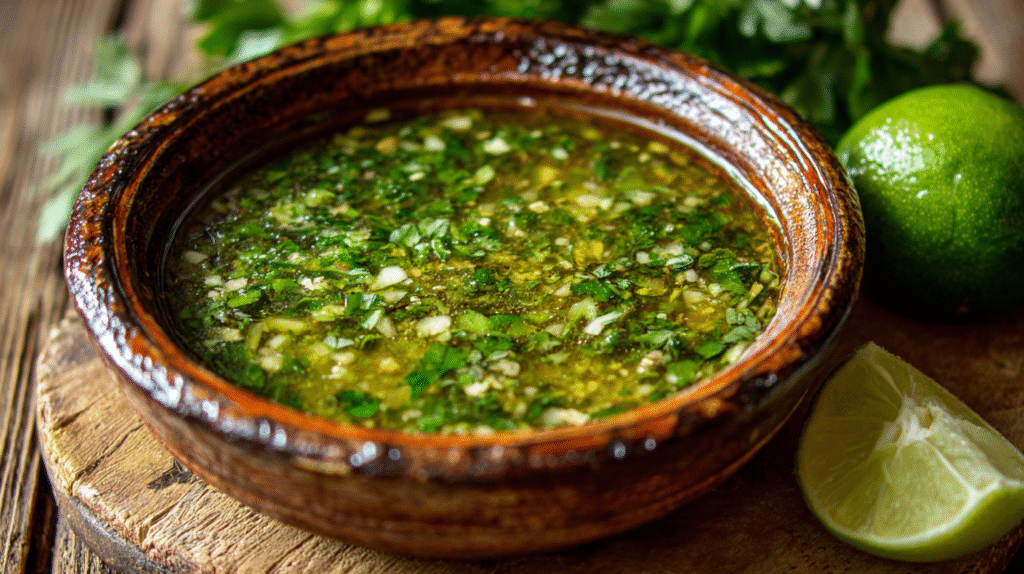
Proper storage is essential to maintain the vibrant flavors of your freshly made salsa verde. Store your salsa verde in airtight glass containers rather than plastic ones to prevent the acidic ingredients from causing chemical leaching. Refrigerate your homemade salsa immediately after it has cooled to room temperature for optimal freshness.
Your salsa verde will keep in the refrigerator for up to one week when properly stored. The flavors actually deepen after the first 24 hours as the ingredients meld together. Stir your salsa before using it again since some separation may occur during storage.
Freezing salsa verde is an excellent option for extending its shelf life. Pour the cooled salsa into freezer-safe containers or ice cube trays, leaving about half an inch of headspace to allow for expansion. Frozen salsa verde maintains its quality for up to three months and makes for convenient portion control when stored in smaller containers.
Before consuming refrigerated salsa verde, check for any signs of spoilage such as off odors, mold growth, or unusual discoloration. Trust your senses when determining if your salsa has passed its prime.
For special occasions or gift-giving, consider canning your salsa verde using proper water bath canning techniques. This method extends shelf life to 12-18 months when stored in a cool dark place. Always follow USDA-approved canning guidelines to ensure food safety.
Label your containers with the date of preparation to track freshness. Remember that homemade salsa verde lacks the preservatives found in commercial versions so consuming it within the recommended timeframe ensures the best flavor and food safety.
Ways to Use Salsa Verde
This versatile green sauce elevates countless dishes with its bright tangy flavor. Here are the many ways you can incorporate salsa verde into your cooking repertoire.
Mexican Dishes
Salsa verde shines brightest in traditional Mexican cuisine where it originated. Drizzle it over chicken enchiladas to transform them into enchiladas verdes with a vibrant tang that cuts through the rich cheese. Spoon it onto tacos of all varieties—from carne asada to fish—adding a zesty punch that complements proteins perfectly. Serve it alongside chilaquiles for breakfast where the sauce mingles with crispy tortilla chips and eggs for a satisfying morning meal. Mix it into pozole verde for an authentic soup experience that showcases the tomatillo’s distinctive flavor. Dollop it onto huevos rancheros where the acidity balances the richness of fried eggs and refried beans. For a simple appetizer spread it over tostadas topped with refried beans black beans or shredded chicken. The sauce also works beautifully in tamales where it infuses the masa with its herbaceous notes.
Marinades and Dressings
Salsa verde makes an exceptional marinade for proteins thanks to its acidic components that tenderize meat naturally. Coat chicken thighs in salsa verde before grilling for a flavor-packed dish with minimal effort. Marinate flank steak overnight in the sauce then grill for a Mexican-inspired carne asada with built-in flavor. Transform the sauce into a vibrant salad dressing by adding extra olive oil and drizzling over mixed greens. Brush it onto shrimp skewers before they hit the grill for a quick appetizer bursting with flavor. Create a marinade for pork chops by combining salsa verde with a touch of honey to balance the tanginess. Toss roasted vegetables in warm salsa verde for an instant side dish with complex flavor. Make a zesty potato salad by mixing cooled roasted potatoes with salsa verde mayo and chopped cilantro. The versatility of this sauce extends to grain bowls where it adds brightness to otherwise neutral bases like rice quinoa or farro.
Variations to Try
While the classic salsa verde recipe delivers incredible flavor, experimenting with different variations can introduce exciting new dimensions to this versatile sauce. Try these creative twists to expand your salsa verde repertoire.
Avocado Salsa Verde
Transform your traditional salsa verde into a creamy delight by adding ripe avocados to the mix. Simply blend one or two peeled avocados with your prepared salsa verde until smooth. This variation creates a luscious texture while maintaining the bright, tangy profile of classic salsa verde. The avocado adds richness and healthy fats that make this version perfect for topping grilled fish tacos or serving as a dip for tortilla chips. You’ll notice the color becomes a more muted green, and the flavor mellows slightly with the buttery notes from the avocado. Adjust lime juice as needed since avocados may require additional acidity to maintain the vibrant flavor balance.
Charred Salsa Verde
Intensify the flavor profile of your salsa verde by deeply charring the tomatillos and peppers before blending. Place your tomatillos, jalapeños, and onion quarters directly on a very hot grill or under a broiler until they develop important blackened spots and blistered skin. The charring process caramelizes the natural sugars and imparts a complex smokiness that transforms the sauce entirely. Allow the vegetables to cool slightly before proceeding with your regular blending process. This version pairs exceptionally well with grilled meats and adds depth to dishes like enchiladas suizas. The smoky undertones create a more robust sauce that stands up beautifully to hearty proteins and brings an authentic taste of Mexican street food to your table.
Fruit-Infused Salsa Verde
Brighten your salsa verde with unexpected fruit additions that complement the tart tomatillos. Pineapple chunks add tropical sweetness and work wonderfully with spicier versions of the sauce. Mango provides a similar sweetness with velvety texture that balances the heat from the peppers. Green apple contributes crispness and tartness that enhances the sauce’s natural acidity. Add approximately 1/2 cup of your chosen fruit to the blender when processing your roasted ingredients. These fruit-forward variations make excellent accompaniments for seafood dishes or pork carnitas. The natural sugars in the fruit help to balance the acidity of the tomatillos while adding complexity to the flavor profile. Remember to adjust salt levels accordingly, as fruit additions may require slightly more seasoning to achieve the perfect taste balance.
Nutrition Information
Understanding the nutritional profile of homemade salsa verde helps you make informed dietary choices. This vibrant green sauce offers many health benefits while adding incredible flavor to your meals. Here’s a breakdown of what you’ll find in a typical serving (about 2 tablespoons) of this recipe:
| Nutrient | Amount |
|---|---|
| Calories | 10-15 |
| Fat | 0g |
| Sodium | 75mg |
| Carbohydrates | 2g |
| Fiber | 0.5g |
| Sugar | 1g |
| Protein | 0.5g |
| Vitamin C | 10% DV |
| Vitamin K | 8% DV |
Tomatillos provide important vitamin C content which supports immune function and skin health. The jalapeños contribute capsaicin known for its metabolism-boosting properties and anti-inflammatory benefits. Fresh cilantro adds vitamin K along with essential minerals that support bone health.
Your homemade version contains substantially less sodium than store-bought alternatives which often pack 200-300mg of sodium per serving. The absence of preservatives additives and excess sugar makes this recipe a heart-healthy option that aligns with most dietary guidelines.
Calorie content remains minimal allowing you to enjoy salsa verde liberally without concern for your waistline. The fresh ingredients deliver phytonutrients and antioxidants that protect cells from damage and support overall wellness.
Those following exact dietary patterns will appreciate that this salsa verde recipe is naturally vegan gluten-free paleo-friendly and fits into most low-carb eating plans. The negligible fat content makes it compatible with low-fat diets as well.
Remember that nutritional values may vary slightly depending on your exact ingredients and portions. Adding avocado to create a creamy variation will increase the calorie and healthy fat content while incorporating more vegetables can boost the fiber and vitamin profile.
Bring the Flavors of Mexico to Your Table
Now you’re ready to master homemade salsa verde and transform your everyday meals into extraordinary culinary experiences. This vibrant green sauce doesn’t just elevate your Mexican dishes – it opens up a industry of creative possibilities in your kitchen.
Whether you stick with the classic recipe or experiment with our suggested variations you’ll taste the difference fresh ingredients make. The beauty of this recipe lies in its simplicity and adaptability to your personal preferences.
So grab those tomatillos next time you’re shopping and prepare to impress family and friends with your authentic homemade salsa verde. Once you’ve experienced the bright tangy flavors of this versatile sauce you’ll never reach for the store-bought version again.

































